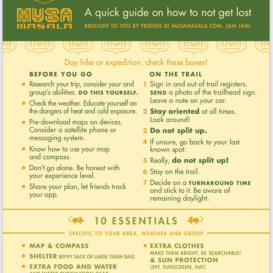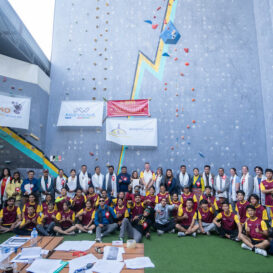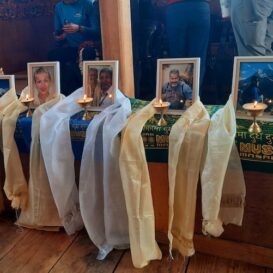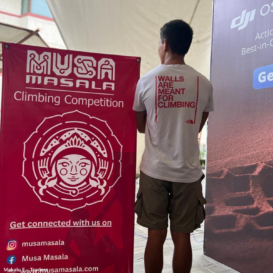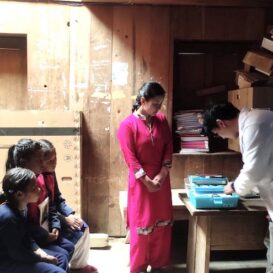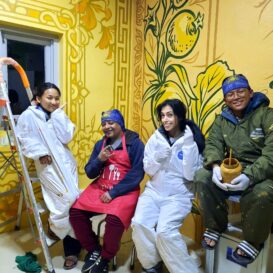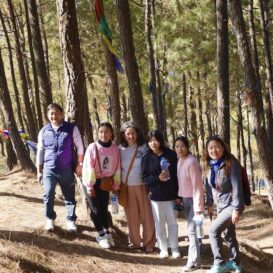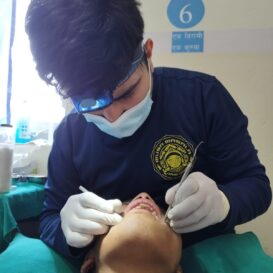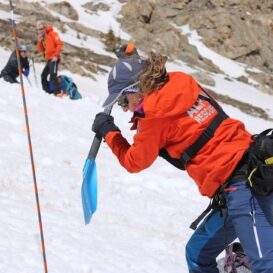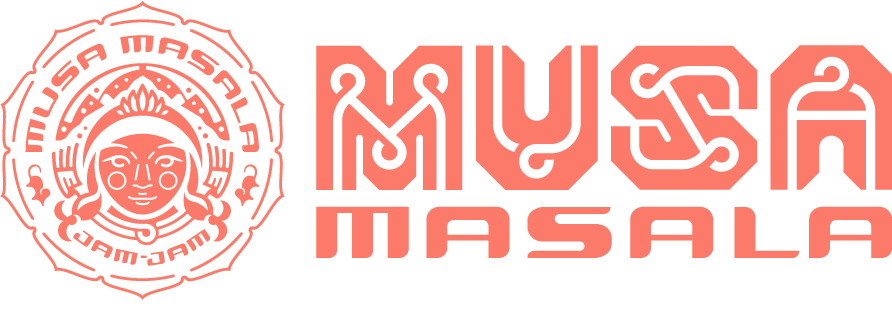This summer I traveled with Stanford University’s Nepal Medical Project to lead a weeklong clinic and healthcare focused classes in Khamding, Nepal. It was the best experience of my life and taught me a lot about family, language, friendship and community.
I arrived into the Kathmandu airport the evening of June 16th. My plane stopped on what seemed to be the middle of the tarmac and we seemingly jaywalked our way across the runway to the brick terminal building. Before I had even cleared security I felt a hand on my shoulder. I turned and saw it was Ang Phula (minus the moustache he was sporting during the Everest Movie). Ang Phula led me outside and dawned a lea of marigolds, “phuls,” around my neck. We then boarded the van and made our way through the crazy streets of Kathmandu.
If you have never been to Kathmandu, you must understand that the road rules are simply suggestions. There is simply a single line in the center of the road that vehicles often cross onto the side of oncoming traffic and police officers blowing their whistles in vain at crowded intersections. That night, the roads were packed with an assortment of vans, colorfully decorated trucks, three wheeled busses, cows and thousands of motorcycles. After an hour of weaving our way through the heavy traffic we made it to Hotel Holy Himalaya, the nicest hotel I have ever stayed in.
That first night I spent a couple of hours at the front desk, where Ripu, Dubree and Sirjehan taught me some basic Nepali phrases that I wrote in my journal. For the next three days I would start off a little after 5am to learn the city and practice saying “Namaste, Topaiko nam ke ho”to everyone on the street. Walking a few blocks to the left of the hotel I got to a large open air market that stretched on far down the street. People were sitting on the street behind sheets covered in piles of vegetables shouting “Selma! Selma” while others came by serving tea or bartering for better prices.
Each block of this market seemed to have its own specialty. There was the spices section, vegetable block and clothing block, each separated by a two or three story temple, which people came by to ring the bells and place offerings to the gods. Outside each temple there were people selling long leis marigolds meant to be good luck and bring long life.
I spent the rest of those days exploring the city by foot, seeing famous sites like the the monkey temple and the giant stupa, but the morning market was my favorite place in the city. I returned there every morning to drink some duchia and watch the city wake up. After three days it was finally time to depart on our trek. We tied the bags to the roof of our Toyota van and set off on the 7 hour “nausea inducing” ride to Jiri.
I was sitting near the back with Ang Dawa and Nawang Sherpa, two of our guides on the trek. I thoroughly enjoyed the rollercoaster-like ride, and on every bump Nawang would almost hit his head and then look at me and laugh. It was also funny observing the rest of the team. Dr. Kelly and Frank were obviously not enjoying the hairpin turns and many near misses with large trucks rumbling down the mountainsides, while Jonathan Mak slept through almost the entire ride. The hills we passed were terraced with rice paddies, banana and Nak cheese shops on the sides of the road and these large mountain busses that had horns that sounded like cartoon sounds.
My most poignant memory is of the drive though the town of Meru. We stopped in this four-house town for lunch and I walked over to the women sitting outside to practice my Nepali. They asked if I was a doctor and I said no, but that I was with some doctors. They went inside and emerged a few minutes later helping an elderly, sick man over to the rest of the team. We did a physical on the man who had a strong cough, but since our medical bags had gone on a tractor ahead of us, we had no medicines we could give to help him. When our van pulled out of Meru, he was still sitting on a plastic chair by the side of the road. I felt horrible about what happened, but vowed that one day I would get the training to help people like him.
By nightfall we made it to the town of Jiri, a town mostly leveled by the earthquake. Our camp was in a meadow surrounded by wooden houses perched on the hill. Our team gathered and the sherpas that were going to be with us for the trek introduced themselves. It definitely took me a few days after that though to learn all the names since it is customary in Sherpa culture to have the first name of the day of the week you were born.
The next morning I woke up to the sounds of mountain bus horns and roosters. On this misty morning I went over to join Kunga and Domay, two assistant cooks the same age as me, for a cup of suchia, a flour and salt based tea. Soon the camp the camp was disassembled and stuffed into the parters’ dokus (carrying baskets) and we started off, up into the fog.
The trail started in the forest, but after about a kilometer it opened up into farmland with an occasional stone house perched on the hillside. As our motly team paraded through the fields of corn, millet and barley all the farmers would stop what they were doing and wave while children would run down the hillsides and shout “Namaste!” to us as we passed.
At one place where we stopped for a rest, a farmer approached our group and started talking to Nawang. Seizing the moment as an opportunity to practice some Nepali, I told the farmer, “Topaiko keti ramro,” which I thought meant, “You have a nice farm.” He just stared back at me in shock while Nawang and Phula laughed at me and told me that keti means woman and kethy means farm.
When we finally made it to Shivalaya, a small village on the edge of a river, I tried to redeem my Nepali skills from the earlier mishap. Next door to the restaurant we were eating at, there was a 6-year-old girl named Prajwal doing her English homework with her mom. From then until the sun went down, the three of us played a Pictionary sort of game where we took turns drawing pictures and then Prajwal would teach me the name of the item in Nepali and I would teach it to her in English.
Over the next six days of trekking, we developed a pretty standard daily routine. I would usually wake up to the cooking crew already being hard at work preparing breakfast. I would share a few cups of suchia with Kunga and Domay until they went to shake the tents and serve morning tea to the rest of the team. Then, we would all have a breakfast of oatmeal or rice porridge, eggs and toast or Tibetan bread.
After breakfast, we donned our packs for the trip up the next mountain. We then would trod along for three to four hours, stopping periodically until we reached our lunch destination. I usually stayed in the back of the group and berated the guide Sherpas with the question “Ke ho yo?” at every bush, tree and flower I didn’t know.
We usually stopped for lunch at different tea houses along the side of the trail. I had never been anywhere before where homes are a few days away from the nearest road, so it kept surprising me, especially the farther we got from Jiri, to see homes and really whole communities centered around this muddy trail. We would break for about an hour and have lunch and then continue walking for another three to four hours until we reached our destination.
Each day our destination was a new and exciting village, monastery or farm that I would go off and explore. On the second day we were being monsooned on when we finally sloped into the tea house in Bhandar.
We sat around the tables and had warm milk and watched the rain come down in sheets outside. The next day we hiked through the forest and to a village called Nam Kelly, which consisted of a single house, two water buffalo, some scattered chickens, an old dog and a few goats. The matriarch of the family gave me a tour and showed where the earthquake had left a huge hole in the side of one wall of the house (that they were still living in). The most magical part about Nham Kelly though was that it was situated on the edge of a deep valley.
Clouds, almost as if alive, kept consuming the valley and engulfing the house and then receding again to show houses and peaks scattered far below. This was the first night we could see the milky way stretching from horizon to horizon above us. The next day’s hike was especially interesting because besides just passing the mani stones we also kept coming to these brightlypainted rock faces. Pimba Sherpa, the assistant guide, explained that these all said “ohm mani pani hom” and were painted by the previous lama that lived at the monastery we were headed to.
As we approached this peak, we kept seeing more and more signs of the approaching monastery ahead: prayer flags, manis and two small stupas guarding the sides of the trail. Soon we saw the pointed peaks of the monastery outlined against the side, but as we approached we could see that this place of peace had been ravaged by the earthquake. Wooden poles were being used to hold up one wall and the opposite wall was completely rubble along with the lama’s house. Dr. Murphy and the other members of the team that had been to the site before silently walked the rubble, reminiscing about what was once there.

The next day we approached a yak cheese factory, where the Sherpas let us stop at and talk to the owners. We then continued up into yak country and the Pikey Peak Base Camp.
The camp was run by an old man and woman and had been left untouched by the earthquake. The man, a lama, said he had prayed to the god of Pikey when the ground started shaking and their whole camp had been spared. Our group convened in the teahouse room and started practicing clinic scenarios while herds of yaks occasionally walked by outside.
After the training, I went down to see what Nawang and Phula were up to. I found them in the smoky teahouse with the thirty other porters and guides. We all sang along to the old lama who was playing what they called a Sherpa guitar. They pushed me into the center of the room with Kunga and Rengi and we all danced and sang late into the night. The next morning we woke up at 4am to summit Peaky Peak. We excitedly clamored up the mountain past throngs of yaks, but when we made it to the top there was only fog in all directions.
At the top, we also took the O2 saturation of everyone in the group. At sea level, people are hospitalized when their O2 levels drop below 95 percent. Up there, mine was 74 percent. From Peaky we descended through the jungle, stopping at a Nak cheese facory, and into fields filled with jopyok (half cow and half yak).
After two more days of descending slippery and muddy trails we made it to the little town of Khamding where we spent the next ten days leading classes and running medical clinics out of the health post there.
Khamding consists of the fruit and electronics store, the shoes and candy store, the food and pots store, the pencils and candy store, two teahouses and a primary school. We all went into the health post and started sorting the hundreds of pounds of medical supplies we brought from Stanford to resupply the health post. There we found their pharmacy in a state of disarray. Dr. Murphy tasked me and an army of Sherpas to help clean and organize it. I spent the next two days with Nawang and Karma scrubbing down the shelves, and checking the expiration dates on thousands of needles. While we were doing this, the rest of our team started doing clinics in the lower floor of the health center.
During our week of clinics we saw between three and four hundred patients, some of whom walked from four hours away to get treatment. In the afternoons after clinic, many of our translators/guides played caram board with us outside the teahouse and I would go and play volleyball with the other teenagers in the school yard.
After the five days of clinic, we conducted five days of healthcare related classes to help increase the scientific understanding of community members and inspire some schoolchildren to one day pursue becoming health workers in the Wong Chu Memorial Hospital that will soon be built near the town.
Our class of 28 women and two men ranged in age from 13 to 70-plus. Every day we taught different lectures ranging from the basics of the immune system to trauma and even preventative medicines. We also led workshops on CPR, oral rehydration salts, microscopes and splinting techniques. It was really fun teaching, especially since the class was engaged and would come ask me questions after. I really enjoyed showing them what cells looked like, as many of the students had seen what real cells looked like before. At the end of the week we had a graduation ceremony for all of our students and then they surprised us by giving everyone katas as a sign of good luck on our journey home.
From Khamding it was a two-day walk up to the Phaplu airport. The hike was really muddy, as it had been monsooning most of the nights, so we half walked, half slid our way up and down the hills until we made it to the town of Sulu, the capital of the district. In Sulu we met a lot more of the Sherpas’ family members and I helped Kunga and Domay fold momos (dumplings) as everyone shared stories.
The next morning it was time for our flight home. We woke up with fingers crossed because if it is cloudy the plane does not fly. Luckily the sky was sunny, so we bid most of our Sherpa friends goodbye and left on the small plane back to Kathmandu.
I will always remember the generosity and kindness of my Sherpa friends in Chyangba and I hope to have another adventure with them soon.
— Christopher LeBoa





















